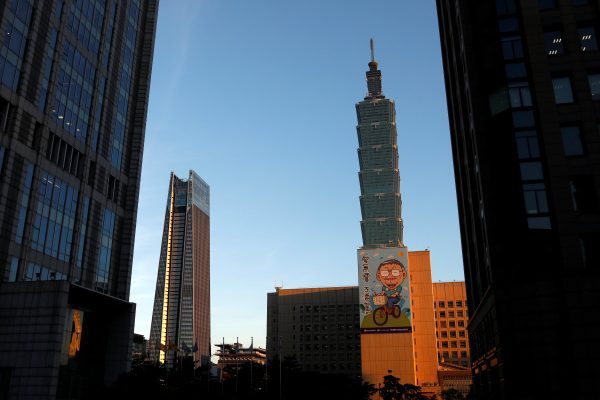The US–China trade war has impacted Taiwan’s merchandise exports to all major trade partners except the United States. Taiwan’s exports to China and ASEAN countries have seen a respective decline by 5 per cent and 7.6 per cent in 2019 (January to November).
Yet exports to the United States have experienced significant growth of 17.6 per cent. The export of ICT (information and communication technology) products to the United States has seen the most noticeable growth. Waning exports are especially clear for chemical products, plastic products and metals. In comparison, the exports of ICT, audio and visual products grew by 21.4 per cent in 2019 (January to November).
The Taiwan government responded to the US–China trade war by encouraging China-based Taiwanese firms to invest in their homeland. Apart from this policy, US companies have requested Taiwanese subcontractors in the ICT industry shift their export platform from China to Taiwan, despite higher production costs in Taiwan. US companies have concerns about the uncertain result of US–China trade negotiations and technology leakages to China.
As of December 2019, Taiwan recorded NT$840billion (US$28 billion) in domestic investment. Most of the investment is made by Taiwanese firms operating within the ICT sector, with business operations in China. Taiwan’s domestic investment has made great contributions to the economy, evidenced by the robust growth in capital formation. The semiconductor industry’s large investment in advanced manufacturing processing is another contributing factor to Taiwan’s growth in capital formation.
Unlike the growing investment at home, Taiwanese firms’ investment in China is declining. Taiwan’s investment in China dropped by 53 per cent to US$3.7 billion in 2019 between January and November. China’s importance in Taiwan’s total outbound direct investment (ODI) fell to 37 per cent in 2019 between January and November, from 70 per cent 10 years ago. But Taiwan’s inward foreign direct investment (FDI) has increased to US$10 billion in 2019 from January to November, the highest since 2008. The strengthening production relation with the Netherland’s ASML — the largest semiconductor equipment supplier in the world — contributed to Taiwan’s surge of FDI in recent years.
Overall, Taiwan’s economy in 2019 has benefitted from investment repatriation. The export diversion effect of the US–China trade war is clearly observable in the ICT industry. The mounting investment in Taiwan is likely to continue to underpin the economy amid ongoing US–China trade tensions in the near term.
But given the still relatively strong cross-Strait industrial linkages in ICT, Taiwan’s export-oriented economy may suffer if the United States includes ICT goods in its new round of tariff retaliation. Nearly 40 per cent of Taiwan’s exports still go to China and Hong Kong today. About half of the exports to China and Hong Kong are electronic components for assembling final ICT products. Almost 90 per cent of Taiwan’s ICT products, ordered by overseas clients, were made in China in 2017.
Taiwan’s economic outlook is overshadowed if China engages in intimidation tactics against Taiwan by ending the Cross-Strait Economic Cooperation Framework (ECFA), in effect since 2011. China may continue to exclude Taiwan from any multilateral and bilateral free trade agreements, which is disadvantageous for Taiwan’s economic development. Due to a lack of free trade agreements, Taiwan can only rely on the World Trade Organization for developing external trade. But the Trump administration has tried to undermine the WTO as a mechanism for settling international trade disputes.
Taiwan’s long term economic prospects are also challenged by an ageing population. According to United Nations’ estimates, Taiwan is set to become a ‘super-aged society’ in 2025 with more than 20 per cent of the population aged 65 and above. Even though policy measures can effectively boost Taiwan’s Total Fertility Rate (TFR), it would take at least two decades to see an increase in the working population.
To cope with labour shortage problems in the future, Taiwan may have to further relax its foreign labour policy and immigrant policy. To attract talent, Taiwan will also have to raise wages to an internationally competitive level. Low wages will not only drive skilled workers to other countries but also hamper Taiwan’s ability to develop innovative, high value-added and knowledge-based industries.
Taiwan’s economy in 2019 is threatened by the US–China trade war. But the economy as a whole has held up relatively well due to Taiwanese firms’ substantial investments at home. Mounting investment will most likely continue to underpin the economy amid the ongoing US–China trade tensions. In the long run, with its growing ageing population, Taiwan’s economic growth prospects may take a beating as savings, consumption, and investment are expected to decline.
Min-Hua Chiang is a Research Fellow at the East Asian Institute, the National University of Singapore.
This article is part of an EAF special feature series on 2019 in review and the year ahead.

